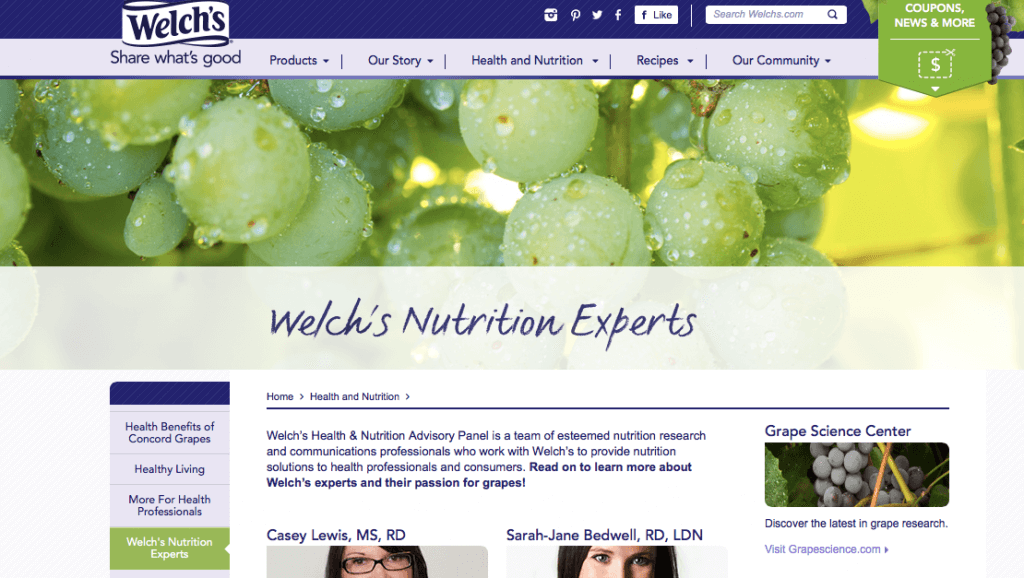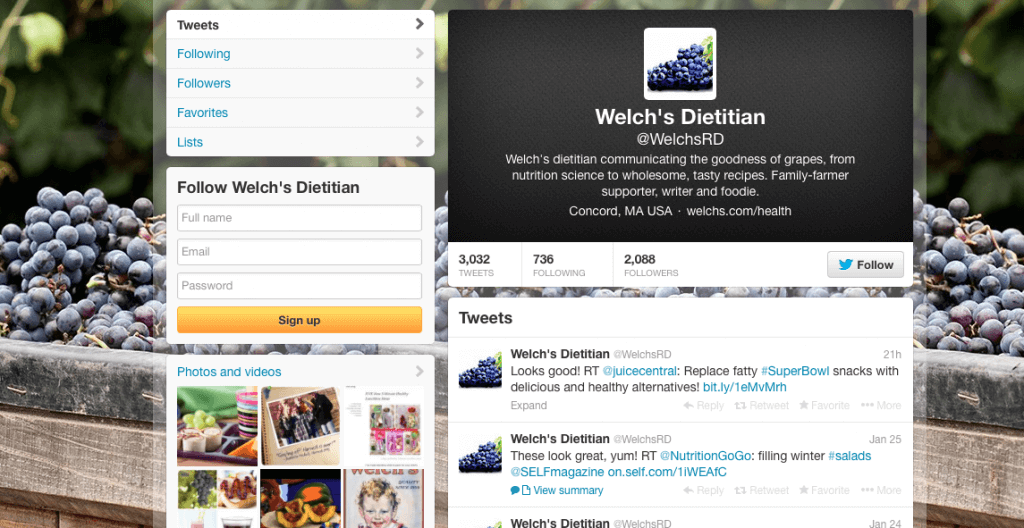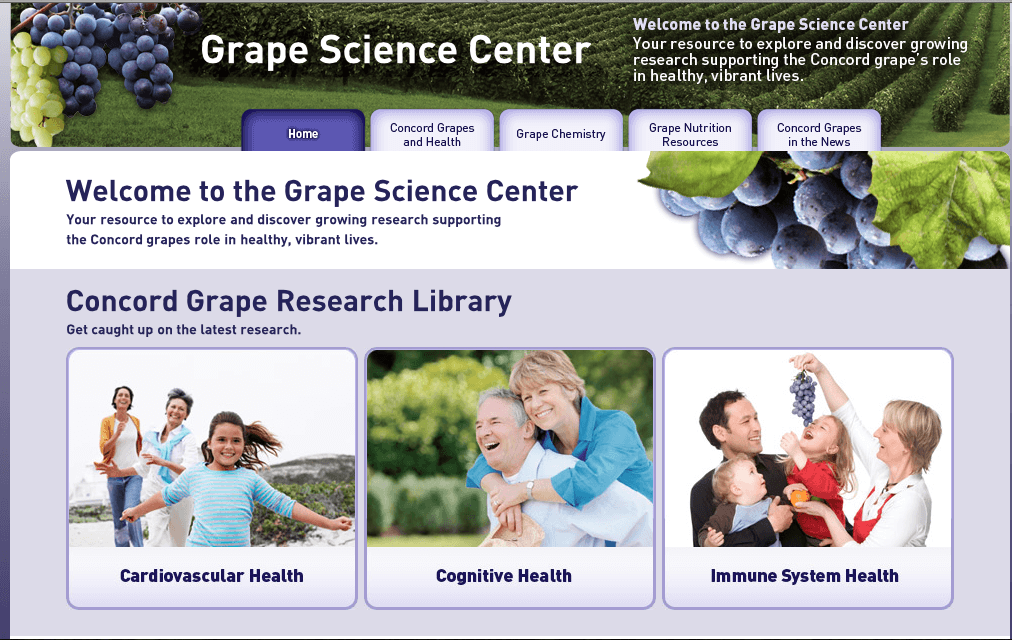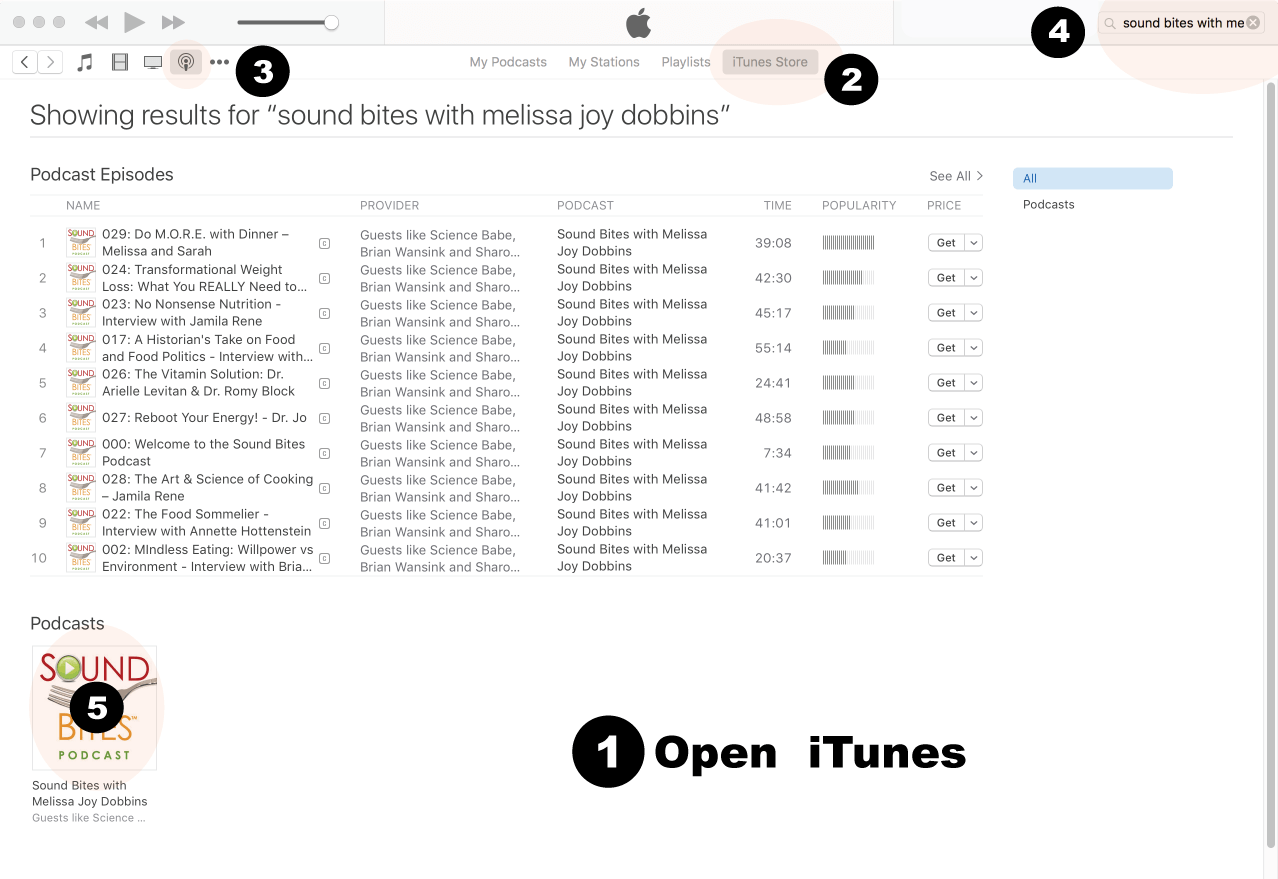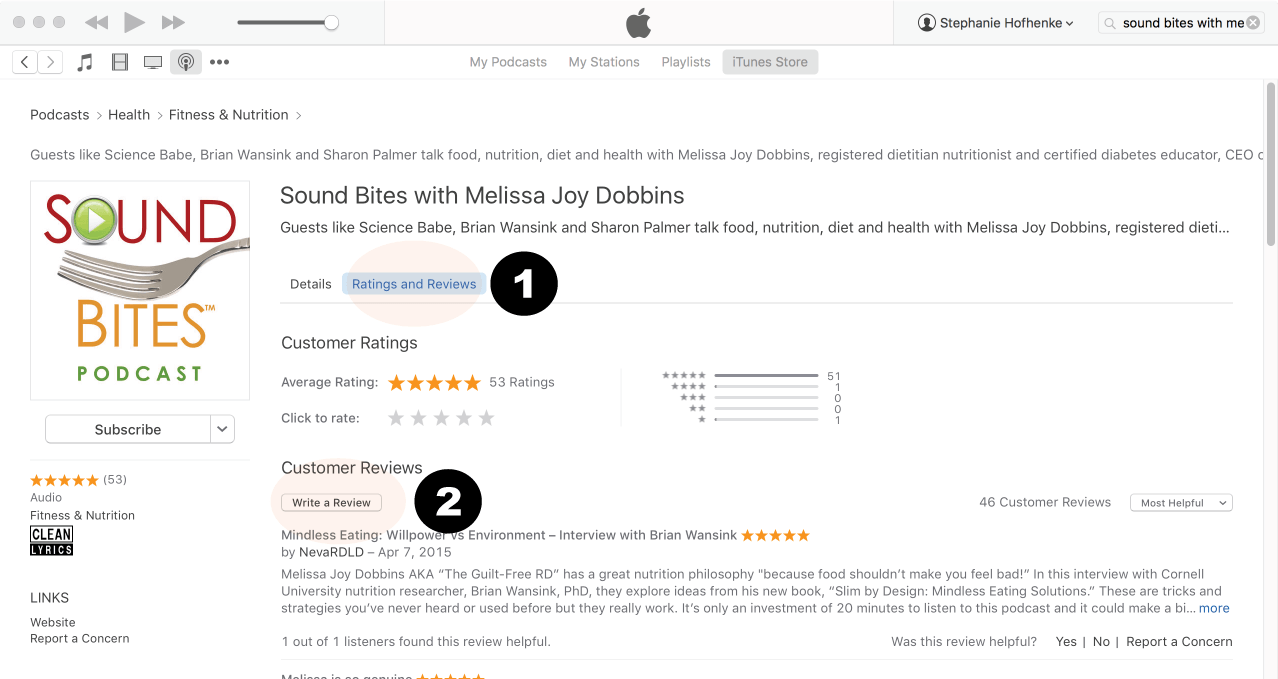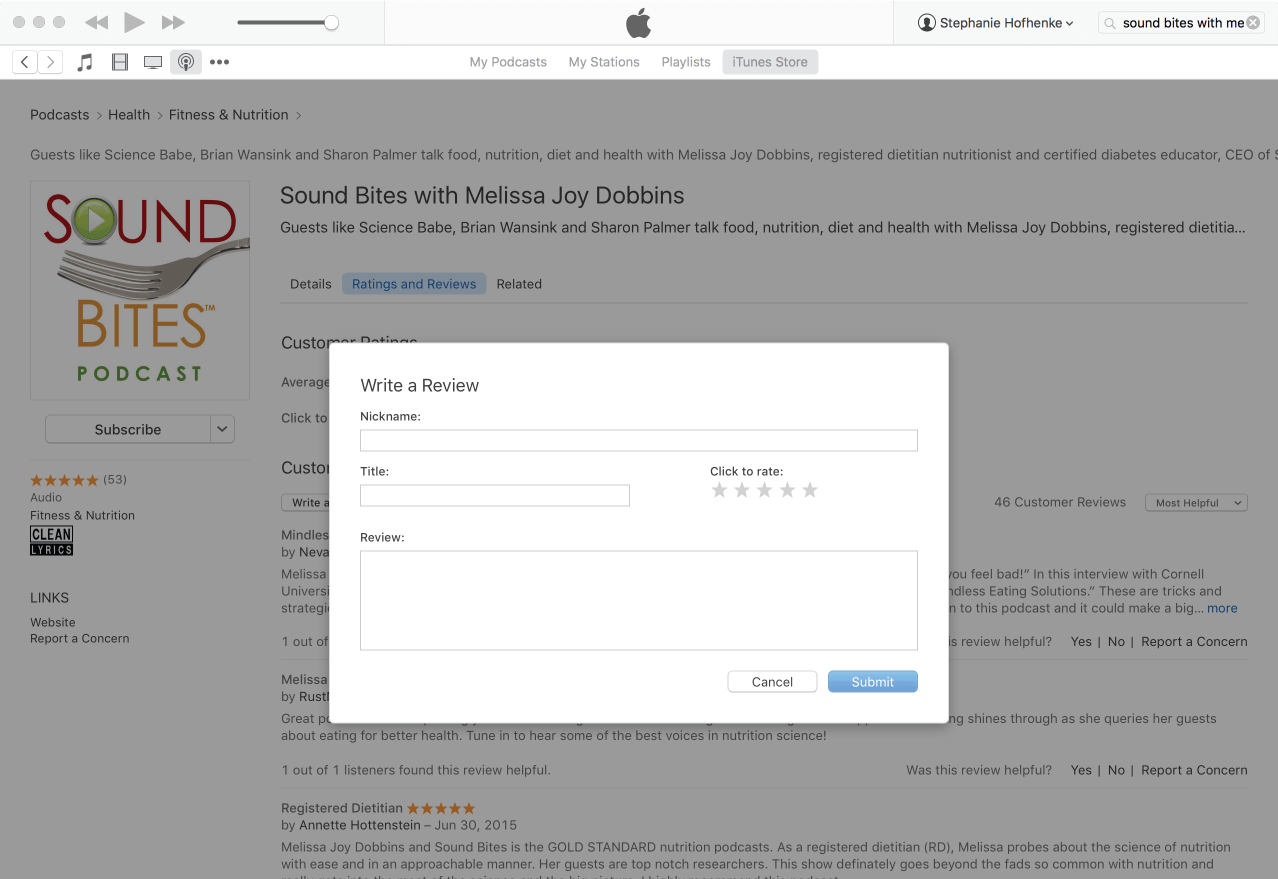Enjoying the Fruits of Labor: Featuring Casey Lewis
PROLOGUE: I met Casey at FNCE a few years ago and enjoyed learning about her role as a nutrition communicator at Welch’s. I told her that the wonderful taste of grape juice is a memory that brings me back to childhood in an instant. I’ll never forget visiting my grandparents’ house and having grape juice and Wheaties in the morning. And Spam at lunch. Yes, I said Spam. It was a very long time ago! Anyway – the grape juice was certainly the most enjoyable of the three.
Speaking of enjoyment, Casey invited me to attend a lovely dinner with Welch’s and Alton Brown that I blogged about in an earlier post. What a wonderful time that was, not only meeting Alton Brown, but also grape farmers and research scientists! And finally, I enjoyed interviewing Casey for my blog, and I hope you enjoy it as well!
MELISSA: Casey, how did you become interested in a career in nutrition?
CASEY: For as long as I can remember I have been absolutely fascinated with both science and food. This fascination drove me to pursue a degree in nutrition, which I originally thought would lead to a career in medicine. However, after spending a year interning at a hospital and learning about the array of opportunities available to dietitians, I realized that working in a clinical environment just wasn’t for me. I discovered my passion, helping families stay well by sharing nutrition information and healthy living advice.
MELISSA: Yes, this field has so many different opportunities! I love it. Tell me about your nutrition philosophy – what are you known for?
CASEY: I have always taken a practical approach to nutrition. Eating nutritiously doesn’t have to be an overwhelming chore. I believe that making small dietary improvements—like cutting back on empty calories and including more colorful fruits on your plate (whether they’re fresh, frozen, or juiced)—can all add up and help contribute to long-term health.
MELISSA: Or canned! I agree – I believe that one of the biggest barriers to people getting enough fruits and vegetables in their diet is that they think it has to be “fresh” and sometimes even “organic”. When (according to a study published in the American Journal of Preventive Medicine) only 11% of U.S. adults meet fruit and vegetable guidelines, the last thing we need is another barrier to getting more fruits and vegetables in our diet!
So, what inspired you to transition into working for the food industry?
CASEY: I began my work with the food industry over ten years ago. I chose this professional path for two key reasons: 1) I wanted to use my educational background to help positively shape the nutrition profiles of products available in our grocery stores and 2) I hoped to leverage the food industry’s marketing expertise and overall breadth to effectively educate thousands of families on the power of nutrition for health. Today I work for Welch’s, where I lead the company’s health and nutrition research and communications program. This opportunity has given me (and the dietitians I work with on Welch’s Health & Nutrition Advisory Panel) a platform to reach and motivate people across the country with nutrition tools and educational materials, as well as easy recipes to make healthy eating delicious and achievable.
MELISSA: Excellent. I think it’s wonderful to see more dietitians in positions like yours – having a “seat at the table” and having an opportunity to be a part of the process and make a contribution, make a difference.
What are you working on right now?
CASEY: While Welch’s is a name many of us grew up with, most people still don’t know that it’s a cooperative that relies on 1,000 family-farmer owners to plant, care for, and harvest Concord grapes across North America. I’ve been working to share this information, plus other somewhat surprising facts, with my colleagues in the nutrition community. In fact, Welch’s frequently supports meetings (like FNCE) and educational resources to provide dietitians with more information on our family-farmer roots and the science-backed benefits of the Concord grape. For example, over fifteen years of research suggests that, thanks to the dark purple Concord grape, 100% grape juice can help support a healthy heart.
MELISSA: You make a point that I’d like to emphasize – sometimes people think it’s a ‘negative’ when research is funded by a company or “industry”. However, they may not realize that industry-funded research is often held to more rigorous criteria and scrutiny (for bias) than other research, AND that funded research is bound to be better quality than unfunded research. But the thing that I think most people don’t stop and think about is what I learned when I worked for the dairy council, and worked with dairy farmers and university researchers: these are the people who know the MOST about this topic! Bias aside (because, after all, we are ALL biased – we all look at the world through our own individual lens) – I think it would be helpful for people to consider the research and ask important questions instead of just “who funded it”. Having said that, here’s a helpful resource for evaluating different types of research studies.
Tell me about the types of nutrition communications you’re engaged in at Welch’s.
CASEY: I actively write and contribute nutrition information to a variety of Welch’s communications channels, including the website and Health Professional Email Newsletter. You can also find me on Twitter.
MELISSA: What comes naturally for you and what do you have to work hard on when it comes to nutrition communications?
CASEY: I have always had a passion for storytelling and enjoyed penning articles, columns, etc. With that said, writing a nutrition story in 140 characters or less is tough! As we know in the nutrition field, oftentimes there needs to be context to the nutrition information we share with the public. It can be hard to speak to the science using only headlines, sound bites or brief tweets.
MELISSA: Yes, I’m always saying that it’s difficult (if not impossible) to distill the science into soundbites. And let’s face it – the “headline” is usually NOT the “bottom line” for people. Quite a challenge for representing nutrition accurately in the news, and in a way that is meaningful and useful for the public.
Please share one experience that either taught you a lot about nutrition communications or you think would help other RDs.
CASEY: As Welch’s only dietitian, I’ve found it really important to stay connected with my colleagues in the nutrition community. Whether it’s meeting with members of our Advisory Panel to discuss translating nutrition research into consumer communications, participating in educational sessions or webinars to learn the latest in polyphenol science, or simply giving an RD friend a call to catch up—staying connected has made me a better nutrition professional and communicator.
MELISSA: I find the relationships with my colleagues are so enriching! It’s one of the best rewards of a career in this field!
What are your top tips for other RDs who want to improve their communication skills?
CASEY: The tools are out there – you just have to know where to find them. For example, Welch’s has a bunch of science-based resources and tools for health professionals on welchs.com and grape science.com. Once you establish your go-to sources for information, then practice, practice, practice! For speaking or broadcast opportunities – practice speaking in front of the mirror or use your family/friends as an audience. For writing, try starting your own blog to hone your “voice” and sharpen your writing style. If that seems like too much work, offer to guest-post for sites that interest you. Welch’s is just starting a new blog for those that may want to get some additional practice.
MELISSA: I love your advice – get the resources you need, practice, and learn by doing! I understand you lived and worked in Australia for a while – what was that like?
CASEY: I worked in the nutrition field and lived in Melbourne, Australia for two years prior to joining Welch’s. It was an amazing experience, professionally and personally. My time overseas broadened my understanding of global nutrition and inspired a new passion, travel. I’ll be forever grateful for my time in Oz—exploring the country, eating fantastic food, and making lifelong mates.
EPILOGUE:
Thank you so much to Casey for giving us a glimpse into the world of dietitians working in, with and through industry to help the public through food and nutrition communications. Be sure to check out the research, resources and social media outlets Casey shared. And, as always, please let us know if you have any questions or comments!

